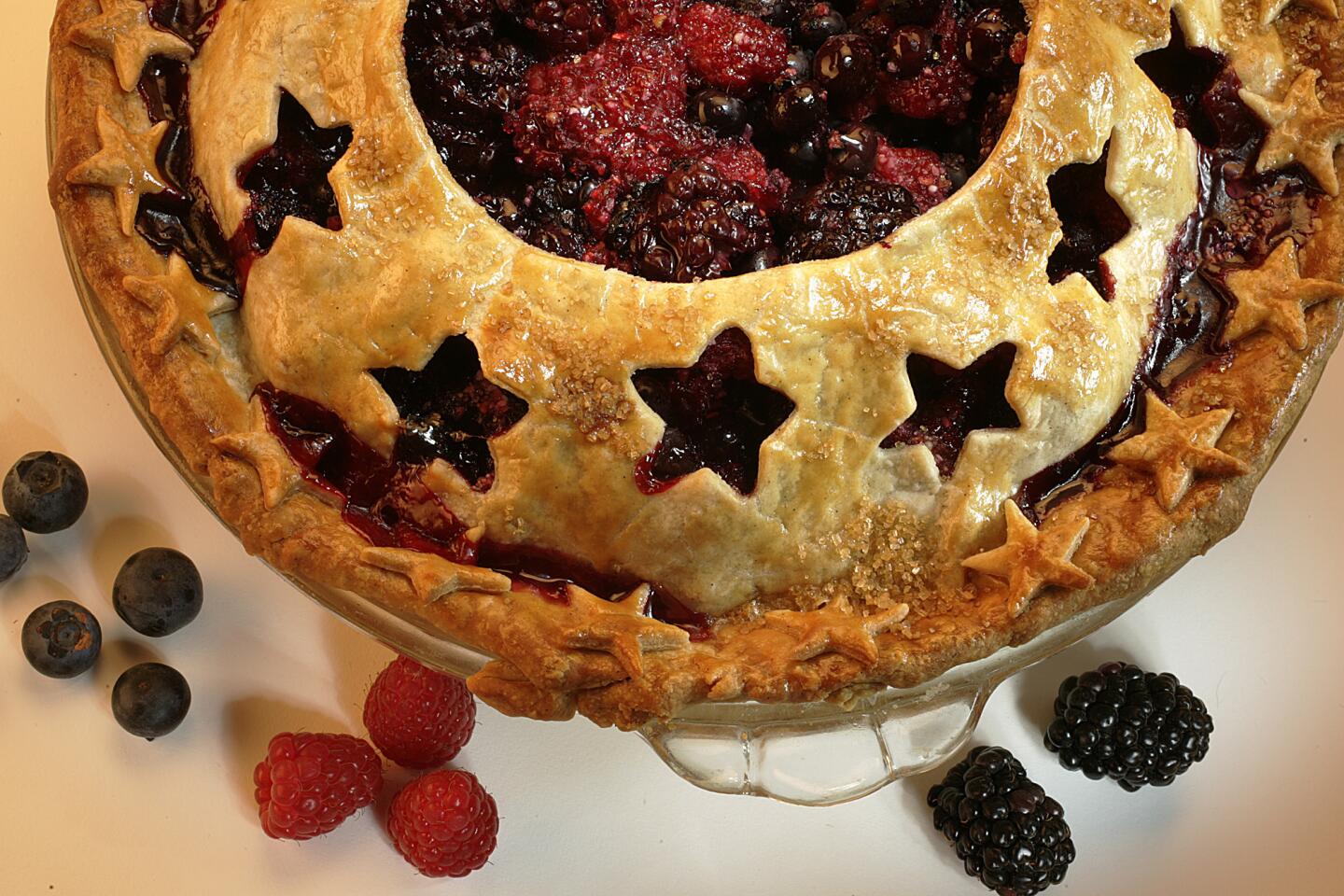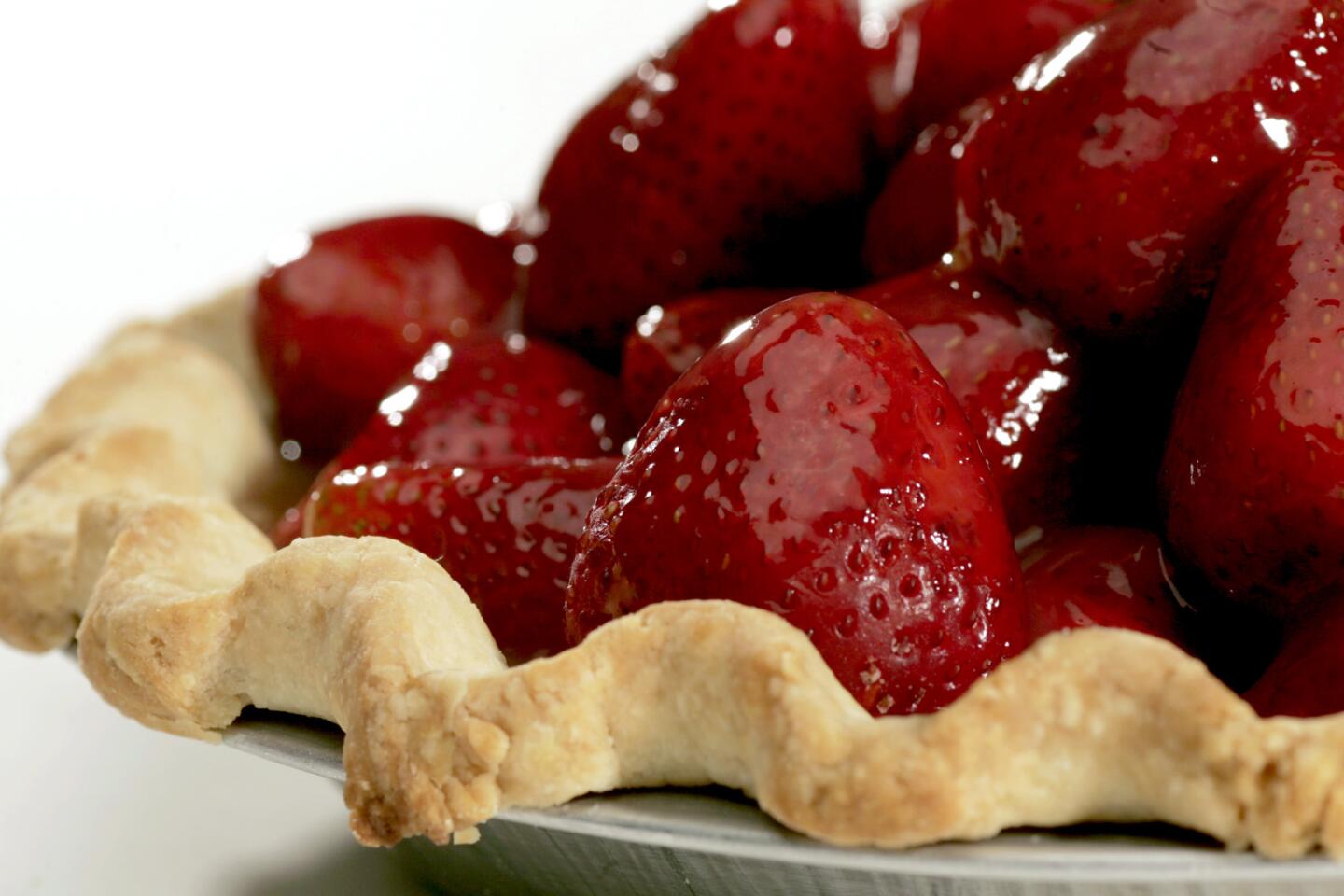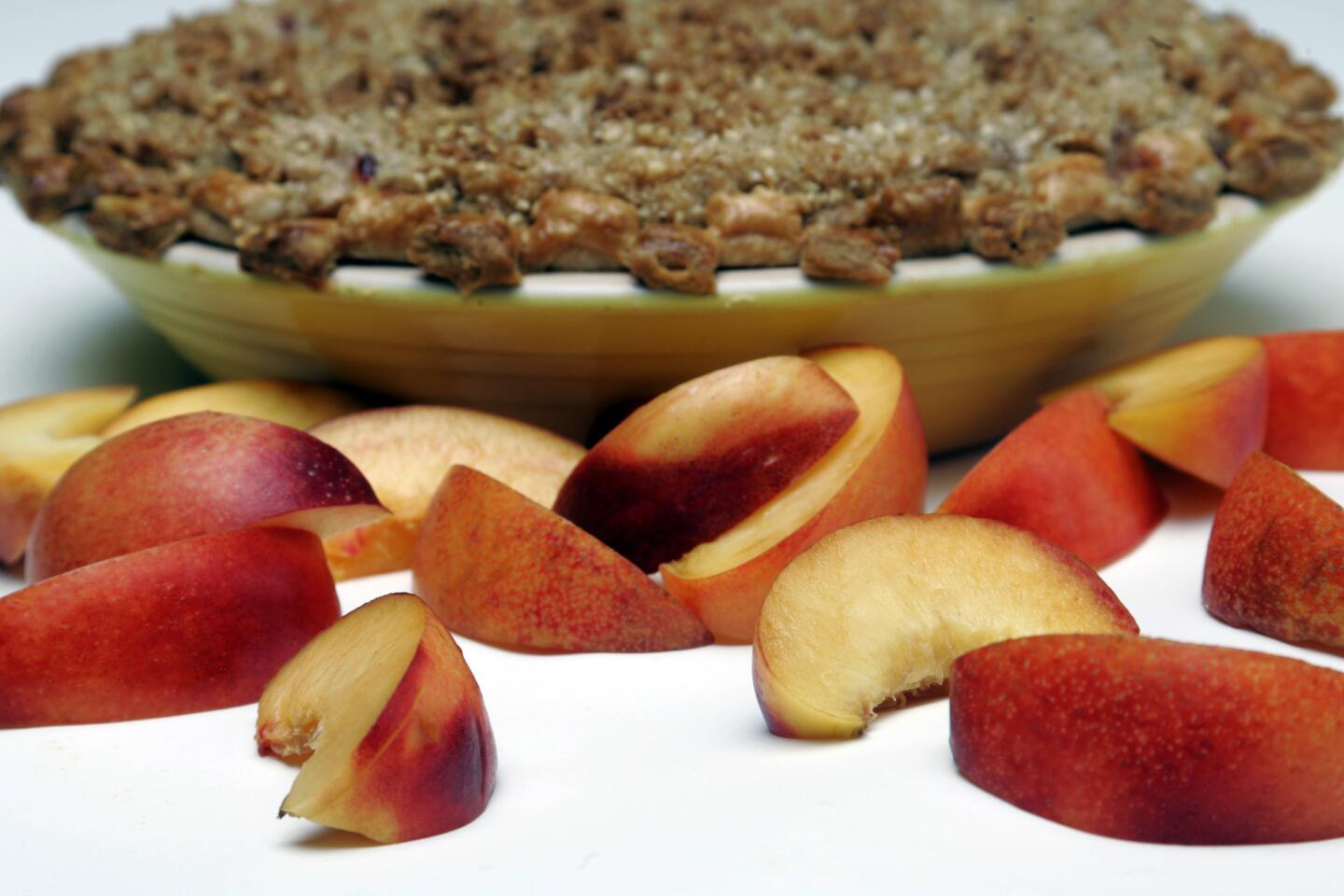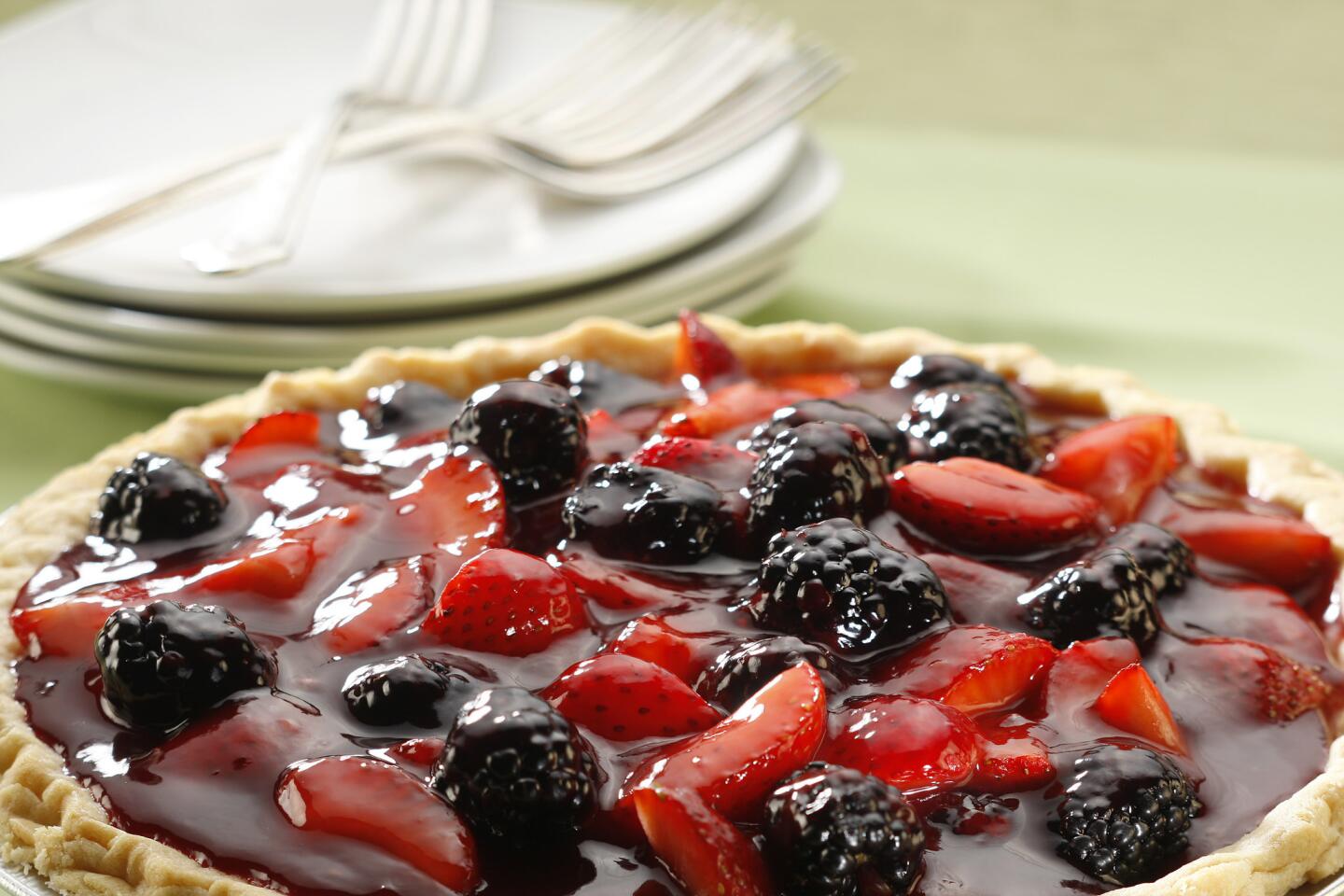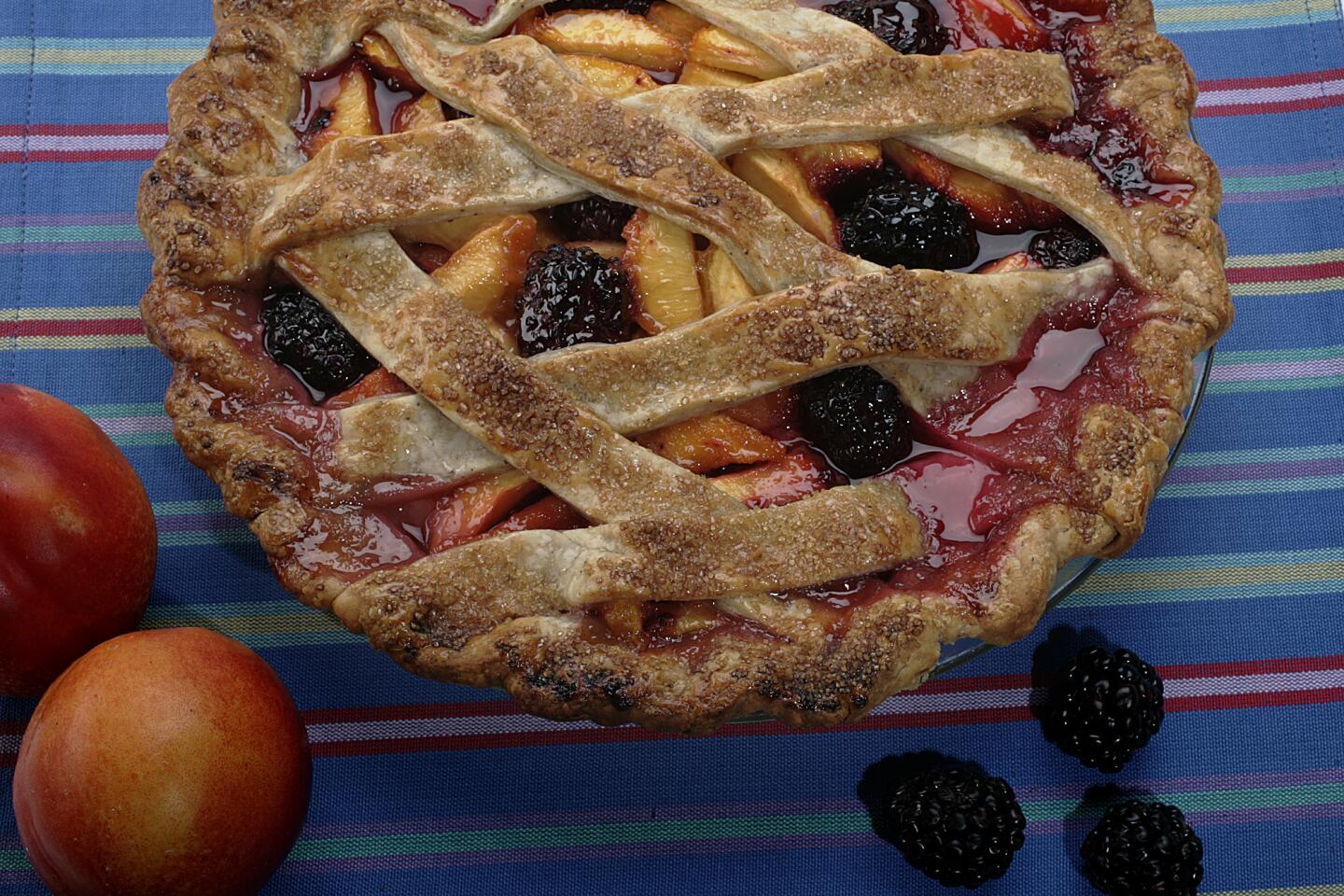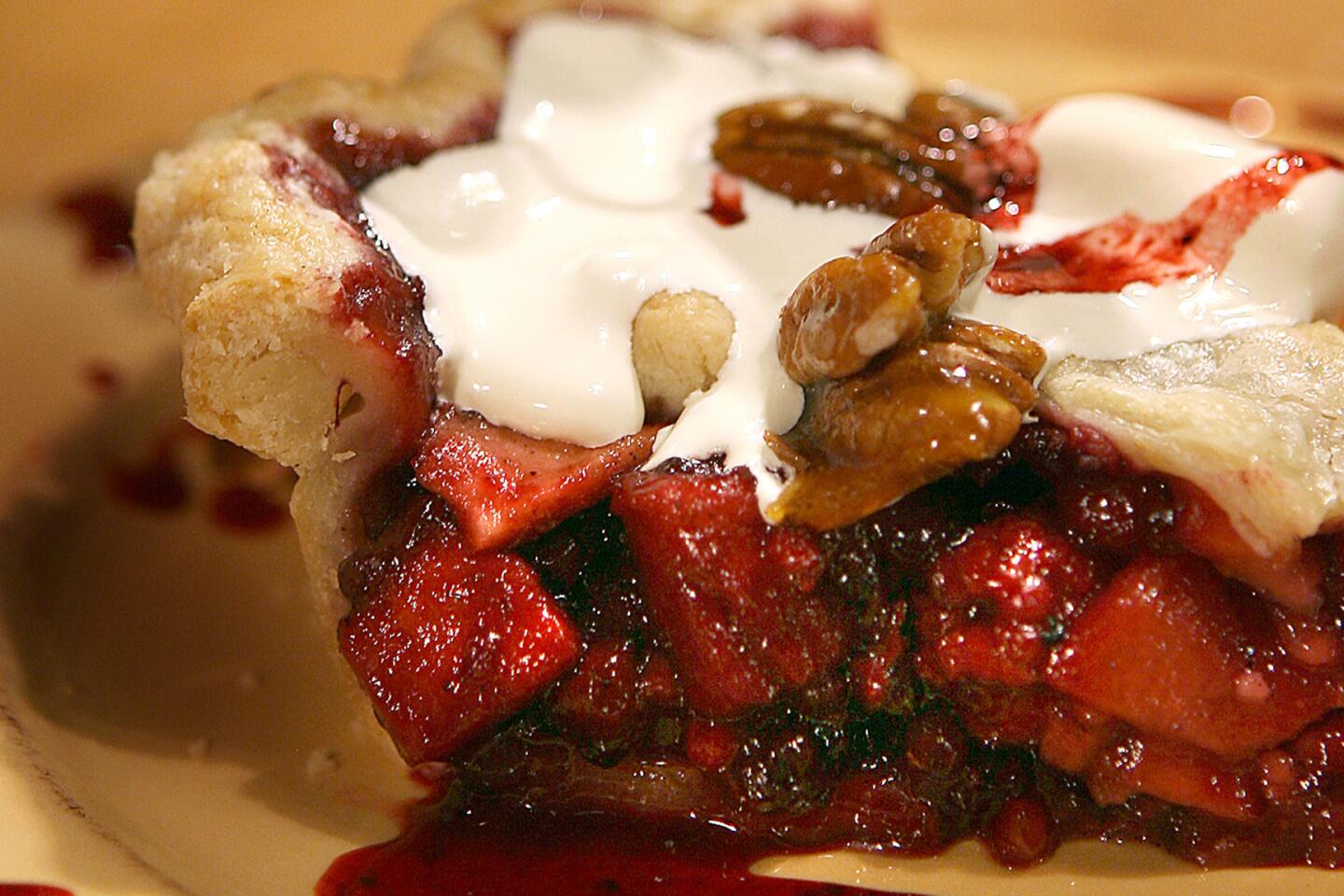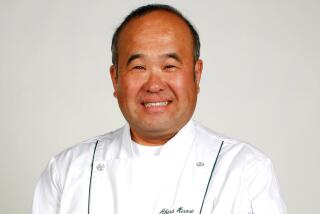The geometry of pie: Because round may be boring, but we love it anyway
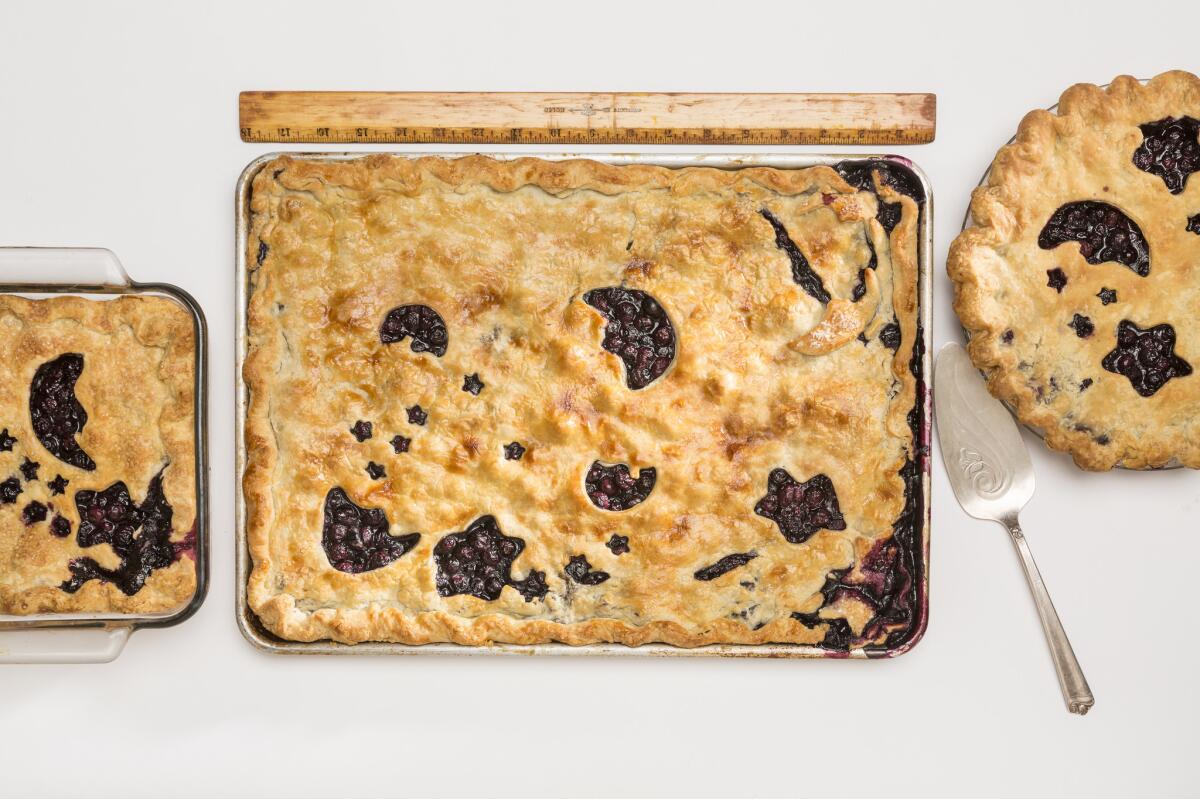
- Share via
Call it pie fate, something I have a little experience with. Recently I received two emails on the same day. The first: What did I think of talking to WNYC “The Sporkful” podcast host Dan Pashman about the merits of round versus square pie? On his podcast, Pashman often explores food construction as an engineering problem to be optimized, and we often debate the minutiae of eating on KCRW, where I’m the host of “Good Food,” so this sounded like another great opportunity to engage on my favorite subject. The second: What did I think of the slab pie phenomenon? There was a strange moment, about three years ago, when suddenly pies showed up on Instagram, Pinterest and food websites in slab form. (We can blame or credit Martha Stewart for this.)
Recipe: Blueberry night sky pie »
So I baked three pies, because that seemed the logical math for this: one pie each in the form of a circle, square and rectangle. Each pie was made with the same Pudwill Farms blueberry filling and the same crust, so that everything was constant but the shape — and, of course, the volume, which turns out to be very important in how we respond emotionally to pie. Because I’ve come to believe that pie holds our group identity as Americans within the confines of its defined shape. Not a bad excuse for a geometry lesson — or for a day of baking and eating pies.
The slab
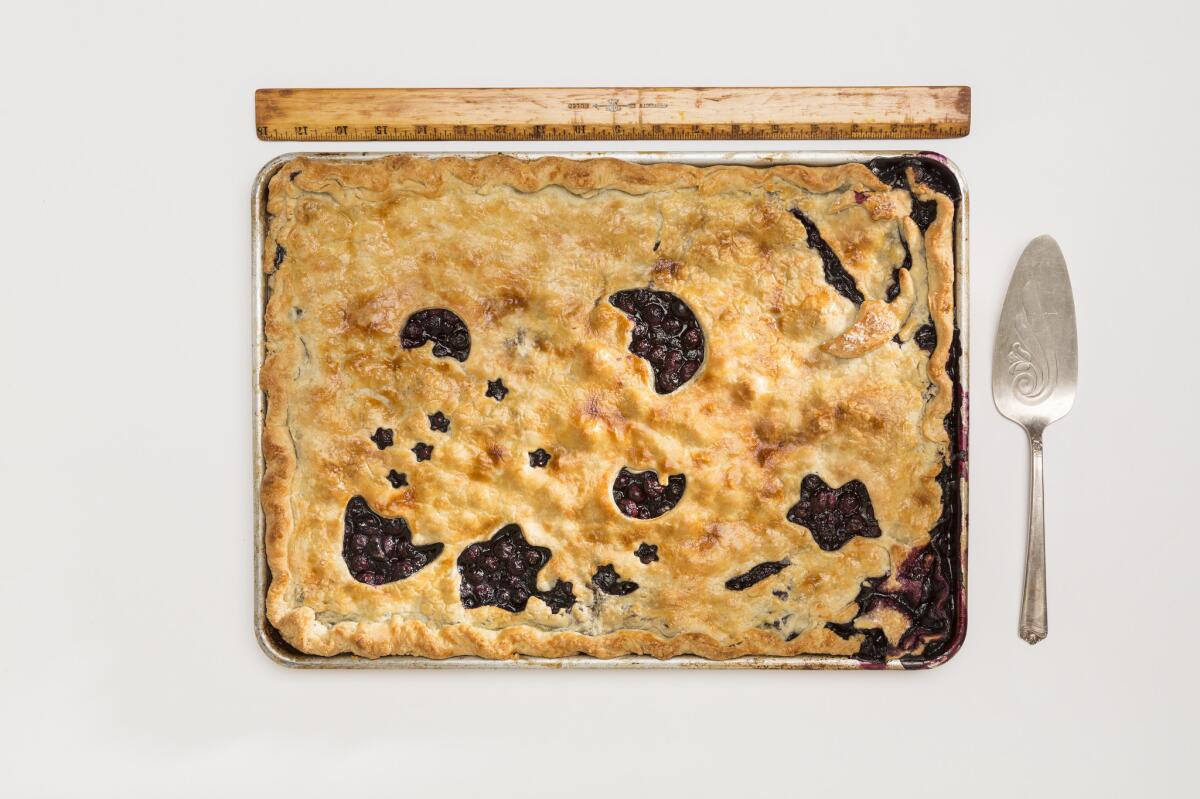
Baking one big shallow pie in a sheet pan, rather than two or three individual pies, is a smart way to feed a crowd, and in an easy-to-transport form. True, if you make a fiddly butter-based crust, you might find it a bit challenging to roll out the large pieces you need without doing some cutting and pasting. But all that “rusticity” somehow makes your rectangle of a pie look more homey and delicious. Obviously the slab has hit a chord, given, you know: #slabpie. Maybe it’s the giant size, or that the shape looks great on Instagram, or that the vast expanse of pie implies (hopefully) that a lot of sharing is about to happen. Maybe people like that slabs are so easy to slice, and that you can forgo a plate and just munch from your hand with a napkin. Hand pies are pretty but tend to be underwhelming in the filling department; whereas a slab, while not as full as a regular pie, does give you a nice bite. But as practical and photogenic as these rectangular pies are, I can’t get over the slab’s resemblance to a tray of bar cookies. (If you use a crumble topping the bar cookie effect is even more pronounced, especially once sliced.) This isn’t necessarily bad — unless you’ve told people they’re going to be eating pie.
The square

Pashman says that the square fulfills pie parameters — with bottom, side crust and filling — and, to be fair to him, my crust did bake beautifully. And I agree that you do get this fantastic wall of crisp dough, as long as you bake your crust long enough. But, as a person who approaches food as culture, as a gestalt: This is not a pie. Rather, a square pie is a cobbler with an unnecessary bottom crust, or maybe a very deep dish pie. Sure, you can create a lake of melting ice cream and thickened fruit in your tall box of pie, but then why not just make a cobbler? It’s faster. Also: Square pies make me think of casseroles. Also: I really dislike deep dish pie pans for sweet fruit pies. Those oversized ceramic pans are terrible heat conductors and make a poor bottom crust. (That said, they’re perfect for sweet or savory cobblers, cream pies with cookie crumb crusts and ice cream pies.) It also makes me sad when I see the ruffled-edge deep-dish glass pans in the grocery store where the 9-inch standard Pyrex pan used to be. If you’re using farmers market fruit, it costs a fortune to fill that thing. And sorry, but there’s just too much filling to the amount of crust.
The round
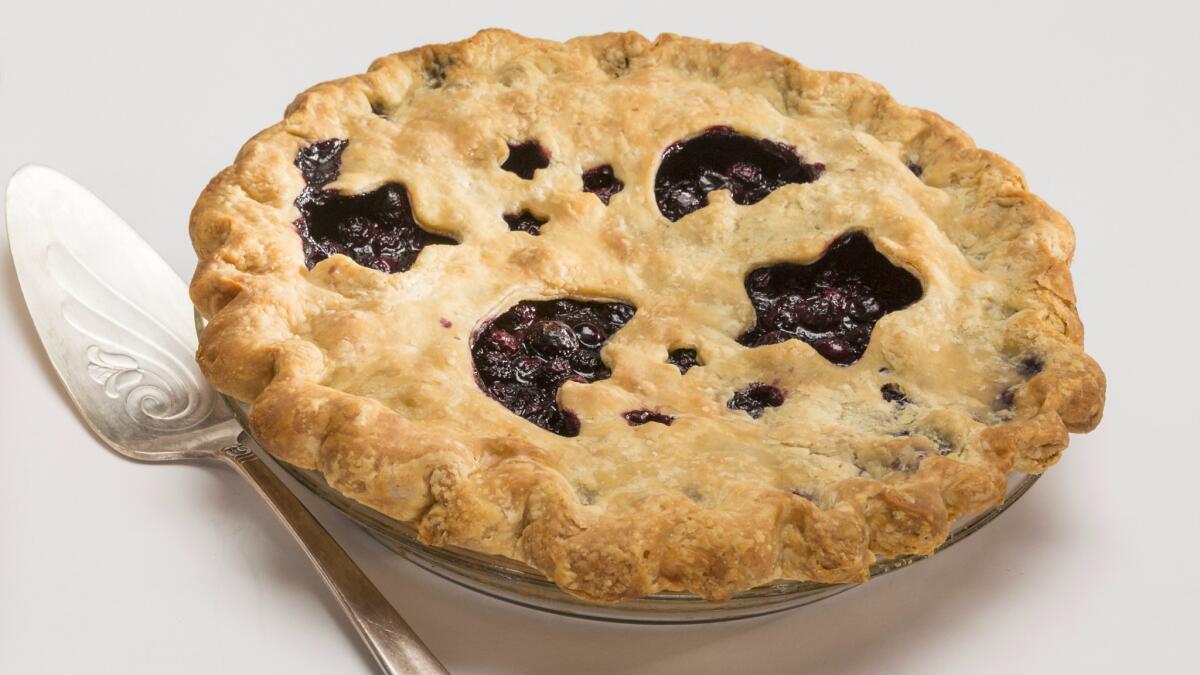
This is a pie. Because, it’s what we expect when someone says pie. Pie is one of the more emotionally laden dishes we eat: It telegraphs the Americana of, well, Americana: mom, apple pie, “Little House on the Prairie,” whatever. Even if your mother doesn’t bake, never taught you and Mrs. Smith has been your goddess to this point, that image of a hot pie cooling on a windowsill is quintessentially American. We come from everywhere in the world, but when we take our fork to a triangular piece of barely thickened fruit, sitting in a buttery flaky crust cut out of a round whole pie, we are participating in a happy group ritual. For me, a round pie with a robust, not-too-thin crust has the golden ratio of flaky buttery goodness to just-sweet-enough thickened fruit. It is the Ur-pie, the pie meant to be sliced and served with a cup of nonartisanal, maybe even percolated coffee. I can’t help thinking this. And, as you can tell from my recent math experiment, I have tried.
Kleiman ran Angeli Caffe for 27 years. She’s the longtime host of KCRW-FM’s “Good Food” and runs its annual pie contest. This year’s contest, the eighth, will be Oct. 2 at UCLA’s Fowler Museum.
More to Read
Eat your way across L.A.
Get our weekly Tasting Notes newsletter for reviews, news and more.
You may occasionally receive promotional content from the Los Angeles Times.
